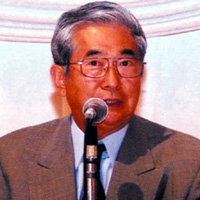Ishihara's Tokyo Revival Bonds Start Strong
Back to Contents of Issue: February 2003
|
|
|
|
by Sumie Kawakami |
|
 TOKYO GOVERNOR SHINTARO ISHIHARA is not alone in trying to diversify the source of local government's revenue, but he has a special way of getting public attention. On November 29, the Tokyo government issued Tokyo Revival Bonds, totaling 20 billion yen. The bonds were sold out within 75 minutes, instead of the two weeks that the government had planned for. TOKYO GOVERNOR SHINTARO ISHIHARA is not alone in trying to diversify the source of local government's revenue, but he has a special way of getting public attention. On November 29, the Tokyo government issued Tokyo Revival Bonds, totaling 20 billion yen. The bonds were sold out within 75 minutes, instead of the two weeks that the government had planned for.For Kenji Koyama, a Tokyo government official who works for the city's bond division, this wasn't a big surprise. "This (public offering) was decided upon because of the popularity of the first in September," Koyama says, referring to the earlier issuance of 20 billion yen in bonds. "Since the day we announced the second round, we did nothing but take phone calls from individual investors," Koyama boasts. "The popularity of the Tokyo bonds lies partly in the falling credibility of bank savings," explains Hitoshi Kawai, senior manager at the debt capital markets division of Mitsubishi Securities. Coupled with the fact that Japan's interest rates have been hitting historic lows, the 1,400 trillion yen in Japan's personal savings needs to be shifted from bank savings, but bear equity markets do not provide an attractive alternative, he says. The name "Tokyo" puts additional value on Ishihara's bonds, especially among the silver generation of investors looking for "more secure and more profitable" financial products, says analyst Tomonori Sasaki at Shinko Securities. So-called "mini-public bonds" are new to the world of local government financing. The Ministry of Home Management, Public Affairs and Posts and Telecommunications deregulated local government bonds issuances this year to make it easier for a local entity to issue bonds in a small lot to the public. Local governments had issued bonds before the deregulation, but most of them had been sold to specific financial institutions whom the issuer had "special connections" with (enko in Japanese) or to institutional investors, leaving individual investors out of the loop. No local government can depend on the national government as a source of public works nowadays. Local governments are expected to share the financial burden of public works spending as the central government tries to cut down on it. But the fever surrounding Ishihara's bonds also seems to have to do with the almost theatrical setting of the issuance. First, the name -- Tokyo Revival Bonds -- caught the public's attention. Industry sources say Ishihara himself came up with the name. Next was the city's effort to connect investors on a personal level to the bonds. The government prepared sightseeing tours for potential investors so they could see construction sites that would receive money from the issuance. The money that the Tokyo government raised from the November offering is to be used to expand the Yurikamome line that runs along Tokyo's waterfront and to rebuild the Kannana highway that runs across Tokyo. Potential investors got on a bus to actually see these sites. "The aim, I think, was to let investors know that their money is actually used for something that they can see. That seemed to have worked," says Kawai. |
|
Note: The function "email this page" is currently not supported for this page.





